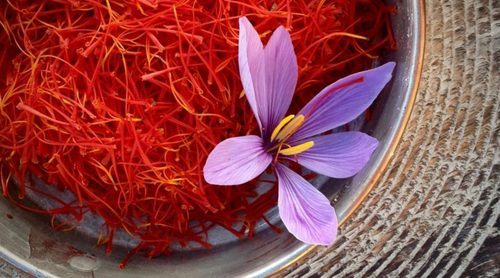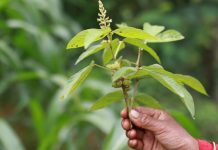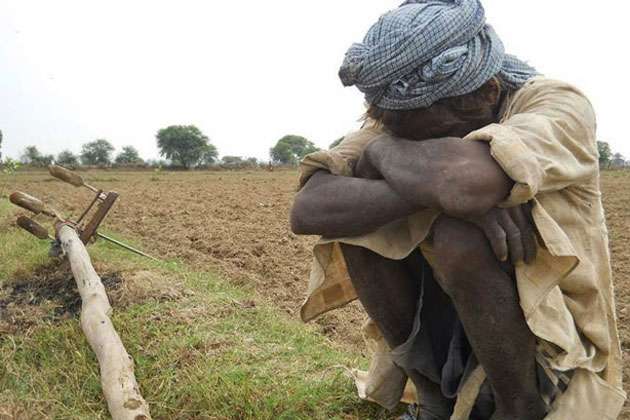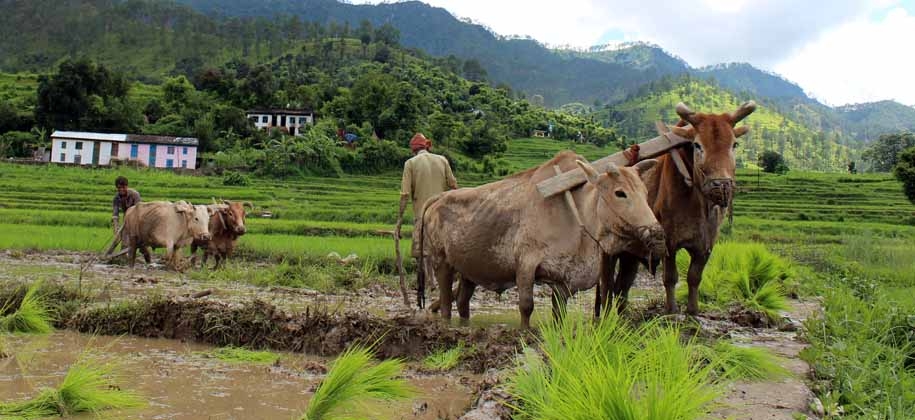Saffron is the most expensive spice in the world and in India, Kashmir grows the bulk of saffron. However, the farming of saffron has been drastically hit in recent years due to the impact of climate change and associated difficulties. Due to this fact that the supply of Kashmiri saffron has been hit in recent years, Iranian imports have taken over the international market. Poor harvest practices, irregular irrigation facilities, poor post farming infrastructure and climate change have hit the production of Kashmiri saffron by 65% in the last 22 years to 2018- from 16 metric tonnes to 5.6 metric tonnes, as per the records of the Department of Agriculture Kashmir. Saffron farming in Kashmir is embedded in cultural and traditional practices and needs to be modernised in order for the yield to improve.
In Kashmir, an average cultivator sows 225,000 corms per hectare, while science says that they should sow 500,000. Moreover, processes involved after the harvest of saffron like the sun-drying of the saffron flower need drastic change. Outside India this is done by machines. The cultivation and production of saffron has to be modernised and revamped for it to give better yield and more profit to the cultivators.The Kashmiri variety of saffron is known to be the most expensive spice in the world and is sold at Rs 1.3 lakh per kilo.
The Iranian saffron is the second most expensive saffron in the word but is still 48% cheaper than the Kashmiri variety. Despite its high price, saffron is in high demand in the international market as it is known for its antioxidant properties. It is so costly because there is a great deal of labour and time required to cultivate the saffron crop. It carries a hefty price because the process of converting the crocus flowers into the thread like spice is painstaking and labour intensive, it takes around 160,000 flowers to yield a kilogram of saffron.
Kashmiri saffron is known to have a higher value in terms of quality because it has a greater concentration pf crocin, a carotenoid pigment that gives saffron its colour and medicinal value. The crocin content of Kashmiri saffron is 8.72% compared to the Iranian variety which has 6.82% according to a government record, this gives Kashmiri saffron its rich colour and medicinal value.
According to a research paper published in the International Journal of Farming and Allied Sciences, “Kashmiri saffron is recognisable by its dark maroon-purple hue; it is among the world’s darkest, which hints at strong flavour, aroma and colouring effect.” Kashmir’s saffron primarily grows in three districts-Pulwama, Srinagar and Budgam.
The problem faced by many farmers is that on an average consumers find its difficult to distinguish between Kashmiri saffron and other varieties and thus it puts the produce from Kashmir at a disadvantage and thus its unable to command the higher price it deserves in the competitive market.
There are other problems like adulteration in high-grade Kashmiri saffron which is mixed with cheaper Iranian varieties and sold. This has cut the profit margins available to local farmers from Kashmir. Therefore most saffron farmers in Kashmir want a Geographic Indication(GI)tag for the Kashmiri saffron. This would be the best way to distinguish the Kashmiri saffron from other varieties and allow farmers to get their due in both the local and international markets.
For the economy of Kashmir it is very important to help out the local farmers growing saffron. Agriculture and allied activities are the mainstay occupation of Kashmiris and is accountable for 80% of the population of the Valley.
More than 16,000 families are engaged in saffron cultivation. At present, 2.35% of Kashmiri saffron is exported annually and traders feel that there is tremendous potential for this to grow.
The ongoing crisis and the communication lockdown in the Valley account for a great degree of damage to the economy in the Valley and has impacted saffron trade drastically. In the face of the new realities in the erstwhile state of Jammu and Kashmir, it will be interesting to see how the government works to improve and better the lives of the saffron cultivators of Kashmir and strengthen them enough to survive and claim their dues in the international market.














